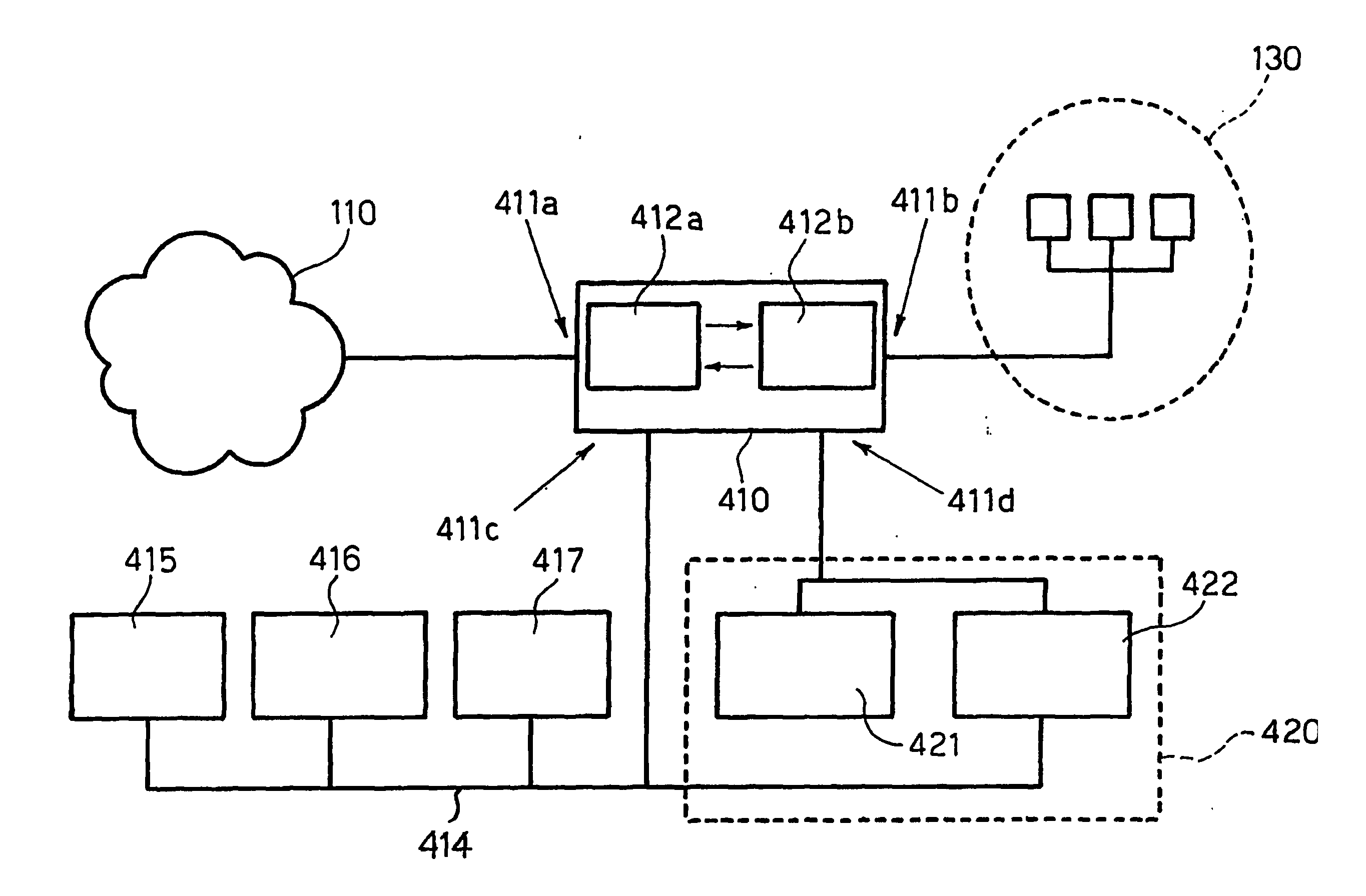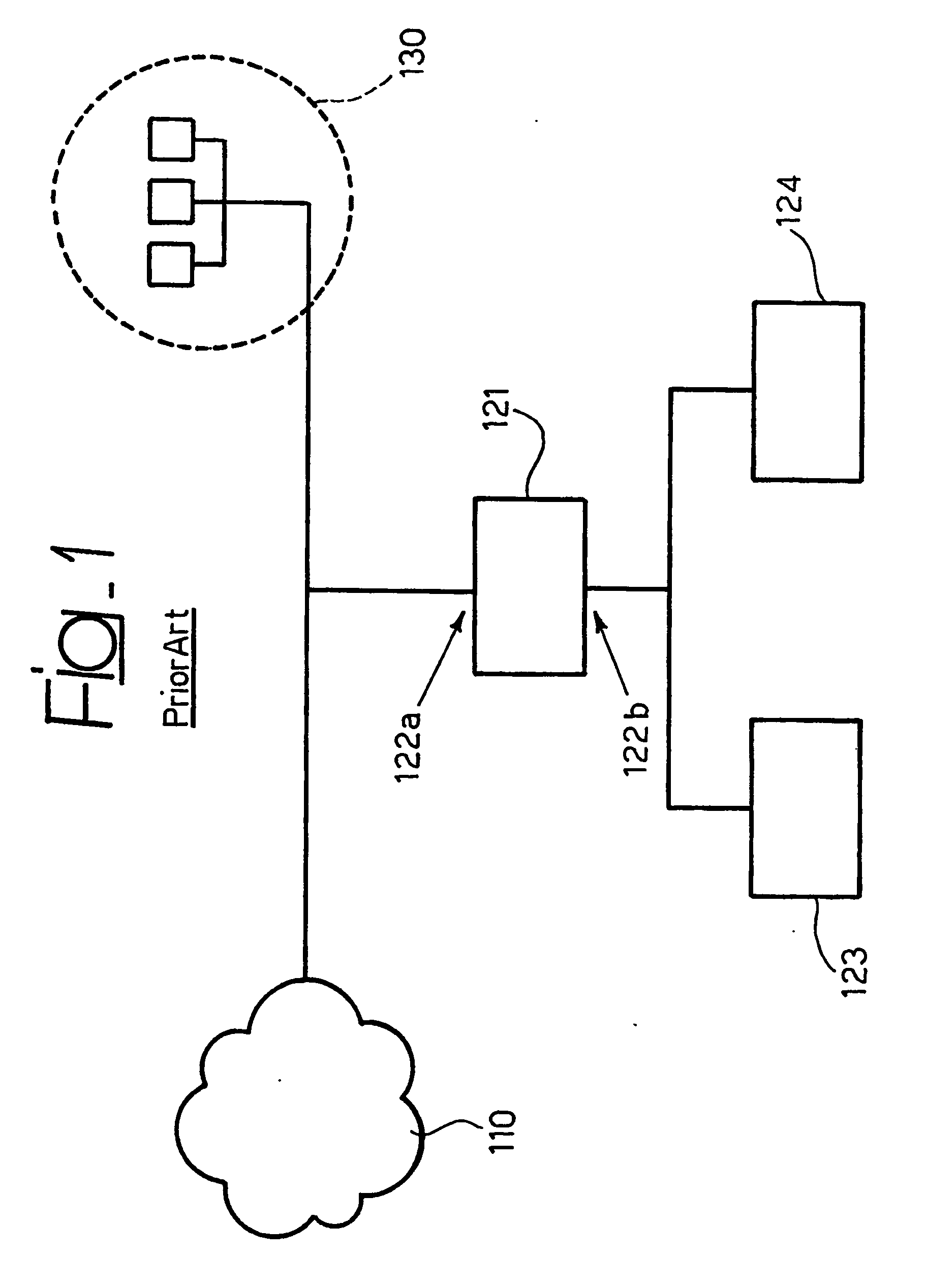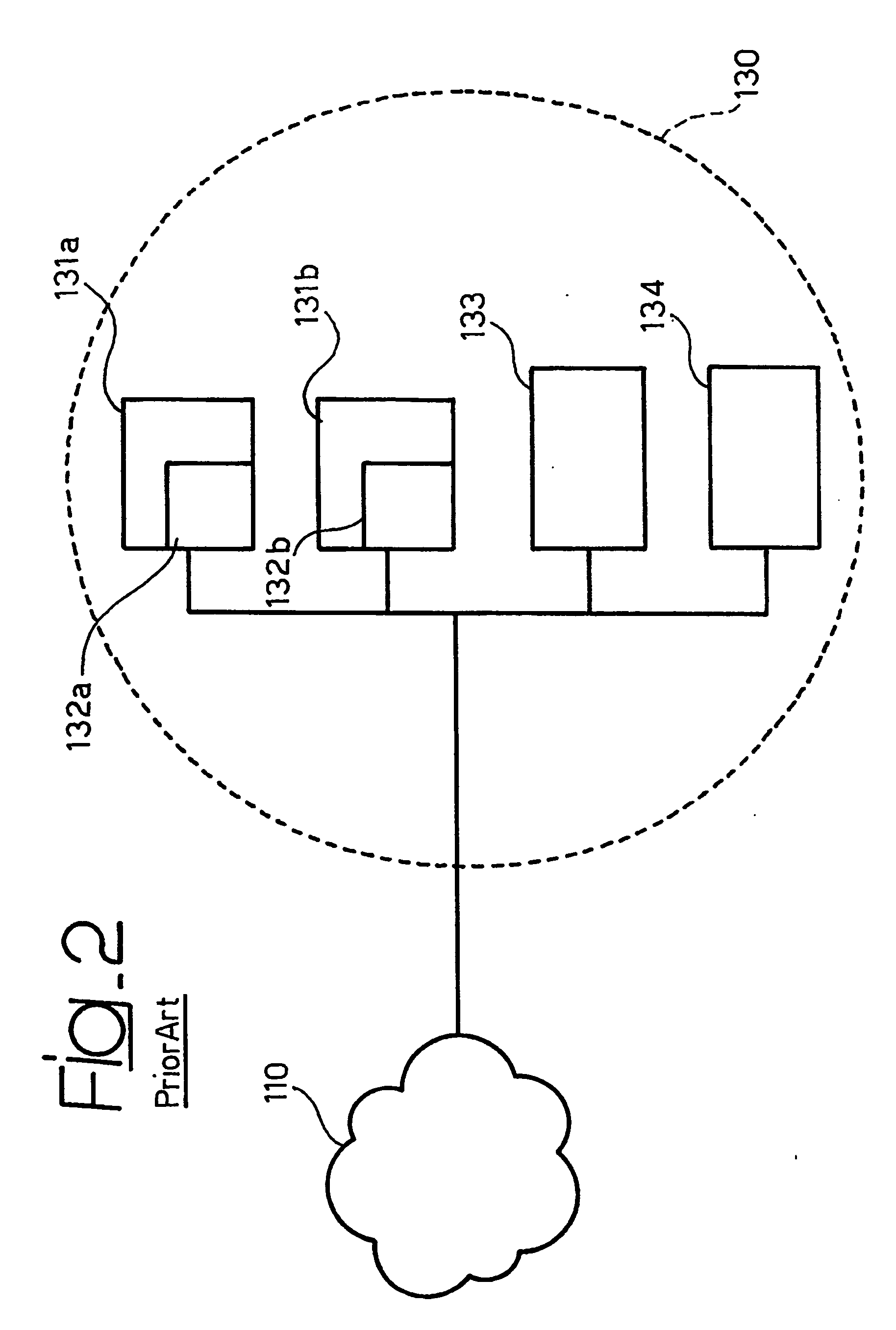Otherwise, the detection system will lose its effectiveness.
The signatures in question usually include an
attack pattern: therefore, even a relatively minor change in the pattern makes recognition impossible.
The monitoring interface is not provided with an
IP address, and therefore cannot be addressed.
The main
disadvantage of such a network-based IDS lies in that it does not have a precise knowledge of the status (services offered,
software used, actual
vulnerability, and so on) of the machines coming down to the
network segment 130 being controlled.
The system activity is limited to monitoring traffic by searching for
attack pattern, without knowing whether these represent an actual
threat for the systems to be protected.
This entails a reduced effectiveness in detection and increases in the number of false alarms.
Any time an
attack pattern is detected, such a system issues an alarm, having typically a variable degree of seriousness depending on the attack type.
This approach produces a huge amount of signalling (in a large network, a single sensor may generate one thousand such alarms per day), thus making it very difficult, if not impossible, to manage such a tool.
Additionally, a good deal of the alarms are in fact false alarms: in fact, the network sensor does not operate in an intelligent manner and issues alarms also when the dangerous packet is addressed to a non-existing
machine (this being a typical situation generated by tools adapted for automatically generating attacks) or when the
machine is not vulnerable to a given attack, because it does not provide a specific service or is equipped with an updated and protected
software release.
This situation leads to handling huge amounts of largely irrelevant data, which may be however be reported with a high degree of gravity, with the risk of however somehow hiding real alarms and diverting time and resources from the task of tackling with actual problems.
In fact, if the intrusion detection and the end-system to which the data are addressed are exposed to different traffic flows, the risk exists that an attack may be unobserved by the detection system, while reaching the final target.
A network-based
intrusion detection system has in fact no warranty and no way for discovering whether a given packet has been accepted or dispensed by the
end system being monitored.
Again,
insertion phenomena (the IDS accepts and considers as valid packets that are dispensed with by the end-system) and evasion (the IDS does not take into account packets that are accepted by the end-system) result in a strong limitation in the detection effectiveness of the systems.
In brief, the basic problem making a network-based IDS vulnerable to
insertion and evasion lies in that the IDS and the end-system may in certain contexts be exposed to two different data flows as they are separate machines, with distinct operating systems and implementations of the TCP / IP stack.
This limitation and the drawbacks referred in the foregoing do limit the detection capability of a network-based IDS and essentially derive from the reduced knowledge available to the
intrusion detection system in respect of the status and configuration (
operating system,
software used, services offered, actual
vulnerability and so on) of the machines coming down to the
network segment being controlled.
Being directly hosted on the system controlled a host-based system (HIDS) system is open to attacks and runs the risk of being disabled as is the case for any other programs running on the same
machine.
The basic limitation of such a system is consequently related to its highly invasive character.
This may lead to a reduction of performance in the machine or, even worst, to conflict with other applications already installed.
This issue becomes even more critical when “production” machines are considered offering critical services, whose configuration can not be modified in order to avoid the risk of making them unstable.
Such a technique must be implemented in such a way to be fast: if the system does not react promptly, it may not be able to block the dangerous
traffic flow or may finally intervene when the damage has already occurred.
One simply has to think of an attack whose dangerous content is limited to a single packet: this is a limit case where a counter-measure as described is totally useless.
However, this technique may not be exempt from the same limitations affecting the other techniques considered in the foregoing.
It is effective in the case of attacks exploiting a shell obtained by means of an
exploit (in which case the
exploit is executed, but the shell obtained is no longer reachable), but it turns out to be useless in the case of those attacks, such as denial-of-service (DOS) attacks, which exhaust their contents in few packets, or even just one packet.
An intrinsic limitation of these techniques is that they are not prevention techniques, in that they do not act before the packet reaches the target.
However, even the arrangement shown in FIG. 3 still suffers from the drawbacks described in the foregoing and related, as is the case of network-based systems, to the lack of precise knowledge of the status of the machines coming down to the network segment 130 being controlled.
In fact, also the arrangement shown in FIG. 3 limits its intervention to monitoring traffic while searching for
attack patterns, without however knowing whether this may represent an actual
threat for the systems protected.
 Login to View More
Login to View More  Login to View More
Login to View More 


